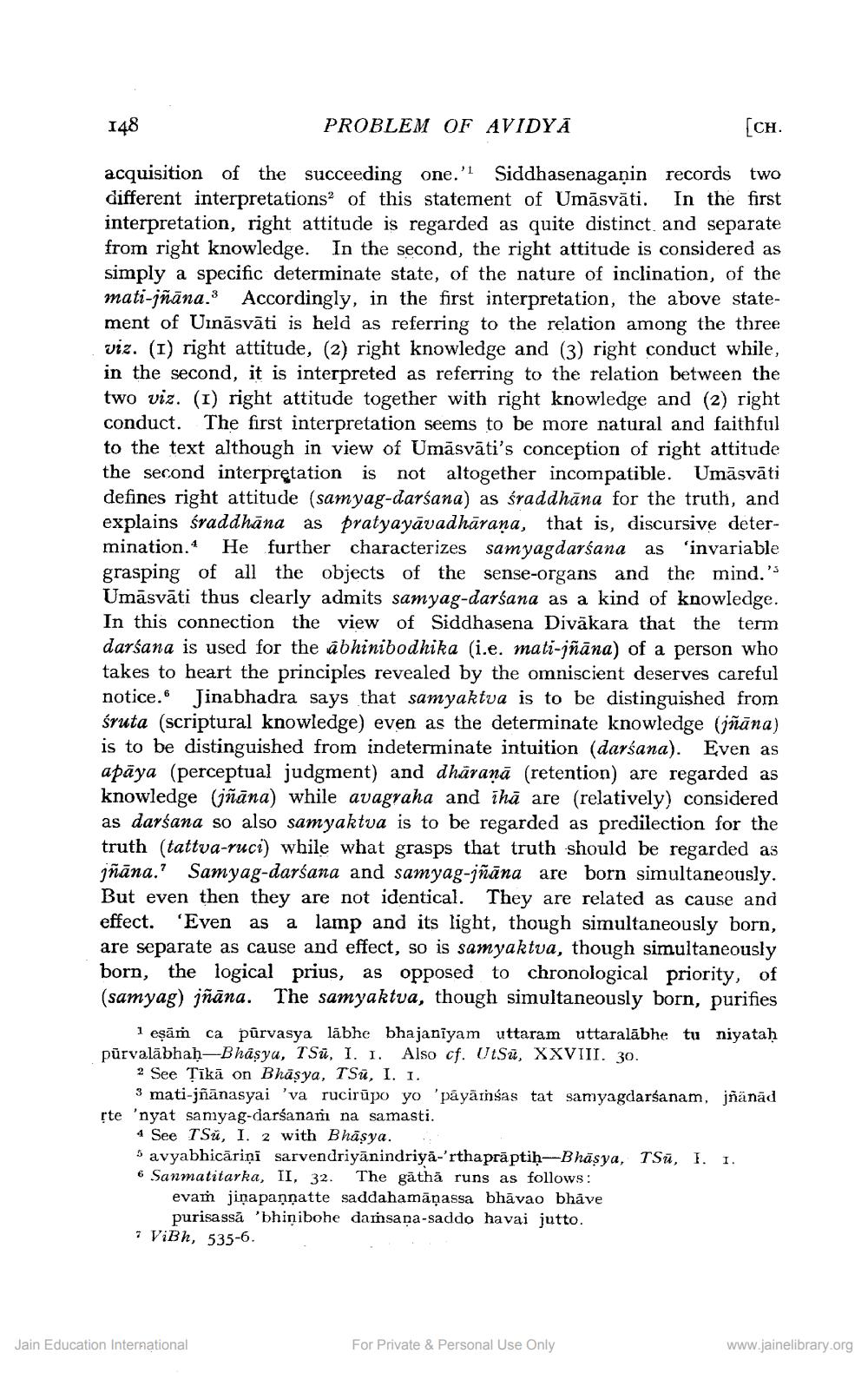________________
[CH.
1
acquisition of the succeeding one.' Siddhasenaganin records two different interpretations of this statement of Umāsvāti. In the first interpretation, right attitude is regarded as quite distinct and separate from right knowledge. In the second, the right attitude is considered as simply a specific determinate state, of the nature of inclination, of the mati-jñāna. Accordingly, in the first interpretation, the above statement of Uināsvāti is held as referring to the relation among the three viz. (1) right attitude, (2) right knowledge and (3) right conduct while, in the second, it is interpreted as referring to the relation between the two viz. (1) right attitude together with right knowledge and (2) right conduct. The first interpretation seems to be more natural and faithful to the text although in view of Umasvati's conception of right attitude the second interpretation is not altogether incompatible. Umāsvāti defines right attitude (samyag-darśana) as śraddhana for the truth, and explains śraddhana as pratyayavadhārana, that is, discursive determination.^ He further characterizes samyagdarśana as 'invariable grasping of all the objects of the sense-organs and the mind." Umāsvāti thus clearly admits samyag-darśana as a kind of knowledge. In this connection the view of Siddhasena Diväkara that the term darsana is used for the abhinibodhika (i.e. mati-jñāna) of a person who takes to heart the principles revealed by the omniscient deserves careful notice. Jinabhadra says that samyaktva is to be distinguished from śruta (scriptural knowledge) even as the determinate knowledge (jñāna) is to be distinguished from indeterminate intuition (darśana). Even as apaya (perceptual judgment) and dhāraṇā (retention) are regarded as knowledge (jñāna) while avagraha and iha are (relatively) considered as darśana so also samyaktva is to be regarded as predilection for the truth (tattva-ruci) while what grasps that truth should be regarded as jñāna. Samyag-darśana and samyag-jñāna are born simultaneously. But even then they are not identical. They are related as cause and effect. 'Even as a lamp and its light, though simultaneously born, are separate as cause and effect, so is samyaktva, though simultaneously born, the logical prius, as opposed to chronological priority, of (samyag) jñāna. The samyaktua, though simultaneously born, purifies
148
PROBLEM OF AVIDYA
1 eṣāṁ ca pūrvasya lābhe bhajanīyam uttaram uttaralābhe tu niyataḥ pūrvalabhaḥ-Bhāṣya, TS, I. I. Also cf. UtSu, XXVIII. 30.
2 See Tīkā on Bhāṣya, TSũ, I. 1.
3 mati-jñānasyai 'va rucirupo yo 'payamsas tat samyagdarśanam, jñānād ṛte 'nyat samyag-darśanami na samasti.
4 See TSũ, I. 2 with Bhāṣya.
5 avyabhicāriņi sarvendriyanindriya-'rthapraptiḥ-Bhāṣya, TS, I. 1.
6 Sanmatitarka, II, 32. The gatha runs as follows:
evam jinapannatte saddahamāṇassa bhāvao bhāve purisassa 'bhinibohe damsaṇa-saddo havai jutto. ViBh, 535-6.
Jain Education International
For Private & Personal Use Only
www.jainelibrary.org




